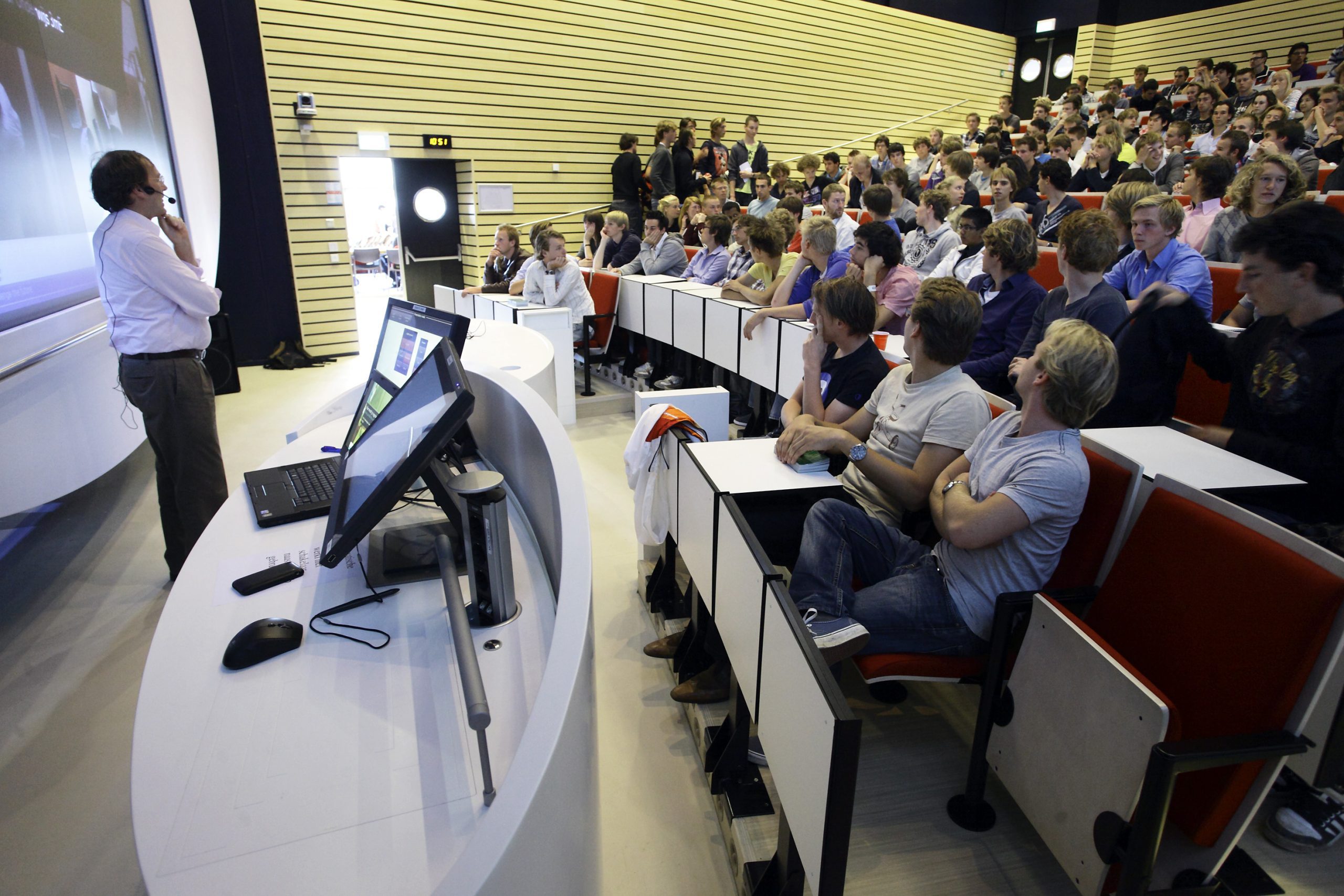Slouch, shift, turn. Lectures can mean lengthy periods of sitting. What are the criteria for a good seat and what can you do yourself? Ergonomist Peter Vink has four tips.
Don't sit too still, advises TU Delft's sitting expert Pieter Vink. (Photo: Archief Delta)
Last year Professor Peter Vink published a book entitled Seat Comfort and Design, was awarded a royal decoration (Officer in the Order of Orange-Nassau), and will give a practical masterclass to vehicle designers in September. He has been Professor of Environmental Ergonomics at the Faculty of Industrial Design Engineering since 2001. Who better could you ask if you want to know about sitting comfortably? Vink has these four tips for sitting healthily.
- Change your position “ – The longer you sit, the less comfortable you will be, even in business class seats. So changing your position is important. What you were doing just before you sat down also affects your first impression. If you test a chair after having gone for a walk, it will feel more comfortable than if you have been sitting on it for a while. Similarly, if you have been sitting on a hard chair for a while, the next chair will feel softer than if you had been sitting on a soft chair.”
- Walk around for a while – “It is important that chairs have enough room to change position. People naturally change position. Research shows that discomfort increases if there is little room for changing position. Advice: take a walk in the break. Research among car drivers shows that walking around for 15 minutes after driving for an hour almost reduces the level of discomfort to before they started to drive. In short, you can recover completely by walking around for 15 minutes. Sitting down for 15 minutes does not have the same effect.”
- Corner backrest depends on the viewing angle – If you search the internet for the ergonomically perfect sitting position, you will sometimes see a backrest angle of 90 degrees. This is rubbish. Scientific research has shown that leaning slightly backwards relieves the pressure on your back, which in turn relieves the pressure on your vertebrae. The backrest angle also depends on what you are doing. Lorry drivers sit high up, as do students in a lecture hall. They need to look down to see the road or the board. A backrest angle of about 105 degrees is perfect for them. So the best backrest angle depends on the viewing angle.”
- Get a soft seat– The most sensitive part of the human body that is in contact with the seat is just behind the knee. It contains blood vessels and nerves that could touch the seat. A sharp edge on the front of the seat is therefore not recommended and if the chair has one, it is best to avoid pressure from the edge if you sit on it for a while. I advise designers to design chairs with a soft or rounded ‘bull nose’.”
Do you want to know more about sitting down and being comfortable? Then see the Seat Comfort and Design book by Peter Vink. The two day masterclass will be held at TU Delft on 21 and 22 September.
Do you have a question or comment about this article?
j.w.wassink@tudelft.nl


Comments are closed.